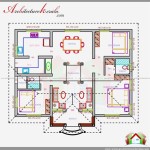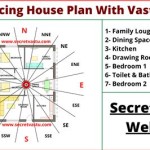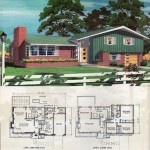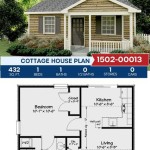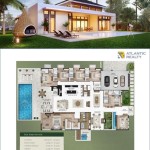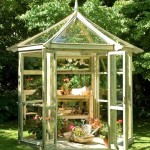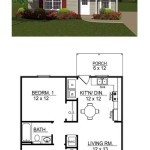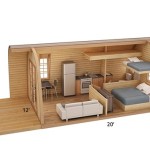Northern Living House Plans: Embracing Comfort and Functionality in Cooler Climates
Northern living house plans are specifically designed to address the challenges and embrace the opportunities presented by colder climates. These plans prioritize warmth, energy efficiency, and functionality while often incorporating design elements inspired by the surrounding natural beauty. Understanding the key features of these homes can help prospective homeowners make informed decisions.
One of the defining characteristics of northern living house plans is their emphasis on insulation. Robust insulation in walls, roofs, and floors minimizes heat loss and reduces energy consumption during harsh winters. This focus on thermal performance translates into lower heating bills and a more comfortable indoor environment. Different insulation materials, such as spray foam, fiberglass, and cellulose, are utilized based on their specific properties and the particular needs of the home.
Window placement and design also play a crucial role in northern living house plans. Strategically positioned windows maximize solar gain during the day, passively heating the home. South-facing windows are particularly advantageous for capturing sunlight. High-performance windows with multiple panes and low-E coatings further enhance energy efficiency by minimizing heat transfer. These windows help to trap heat inside during the winter and prevent excessive heat gain during the summer.
Roof designs for northern homes are typically steep-pitched to shed snow and ice effectively, preventing accumulation that could damage the roof structure. Durable roofing materials, such as metal or asphalt shingles designed for cold climates, are chosen for their longevity and resistance to harsh weather conditions. Proper ventilation is also a key consideration in roof design to prevent ice dams and ensure adequate airflow.
Floor plans for northern living often prioritize open-concept layouts to promote natural light penetration and create a feeling of spaciousness. Common areas, such as the kitchen, dining area, and living room, are often grouped together to maximize the benefits of passive solar heating. These designs also encourage family interaction and create a warm, inviting atmosphere.
Mudrooms and entryways are essential features in northern living house plans. These designated areas provide space for removing and storing outerwear, boots, and sporting equipment, preventing the tracking of snow and dirt into the main living spaces. Mudrooms can also incorporate features like built-in benches, storage lockers, and drying racks to further enhance their practicality.
Fireplaces and wood stoves are frequently incorporated into northern living house plans, serving as both a supplemental heat source and a focal point for gathering. These features contribute to the overall ambiance of the home and offer a cozy retreat during cold winter evenings. Proper installation and ventilation are crucial to ensure safe and efficient operation.
Exterior finishes for northern homes are chosen for their durability and weather resistance. Materials such as wood siding, brick, and stone are commonly used for their ability to withstand harsh climates. Proper sealing and maintenance are essential to protect these finishes from moisture damage and ensure their longevity.
Landscaping considerations for northern living often include windbreaks, such as strategically planted trees and shrubs, to reduce the impact of cold winds on the home. Deciduous trees placed on the south side of the house can provide shade during the summer while allowing sunlight to penetrate during the winter. Proper drainage is also important to prevent water accumulation and potential damage to the foundation.
Basements and foundations in northern homes are designed to withstand the effects of freezing temperatures and potential frost heave. Insulated foundations and proper drainage systems help to prevent heat loss and protect against moisture-related issues. Basements can be finished to provide additional living space or utilized for storage and utility purposes.
Garages are often an integral part of northern living house plans, offering protection for vehicles from snow and ice. Attached garages provide convenient access to the home during inclement weather. Heated garages are also a popular option, offering added comfort and preventing vehicles from freezing.
Ultimately, the ideal northern living house plan will vary depending on individual needs and preferences. Careful consideration of factors such as budget, lifestyle, and desired features is essential in selecting a plan that provides both comfort and functionality in a cold climate.
The increasing focus on sustainable living has also influenced northern home designs. Incorporating energy-efficient appliances, utilizing renewable energy sources like solar panels, and implementing water conservation strategies are becoming increasingly common in these plans. These sustainable practices further reduce environmental impact and contribute to long-term cost savings.
Accessibility features are also becoming an important consideration in northern living house plans. Features such as wider doorways, ramps, and grab bars can make homes more accessible for individuals with mobility challenges. Incorporating these features during the design phase can ensure that the home remains functional and comfortable for residents of all ages and abilities.

Gallery Of Northern Lake Home Strand Design 26 Modern House Plans

House Plan Passive Solar Plans Homes

Fi Homes Plans Carpentry

Northern Lights House Design Manor Build

House Plans Floor Blueprints
.jpg?strip=all)
Seven Deadly Sins Of Home Design

1959 Mid Century Modern House Plans Vintage

The Moss Cabin 18 X 24 Small 330 Sq Ft Tiny House Plans English Version

House Plans Floor Blueprints

House Plans Floor Blueprints Home Designs

